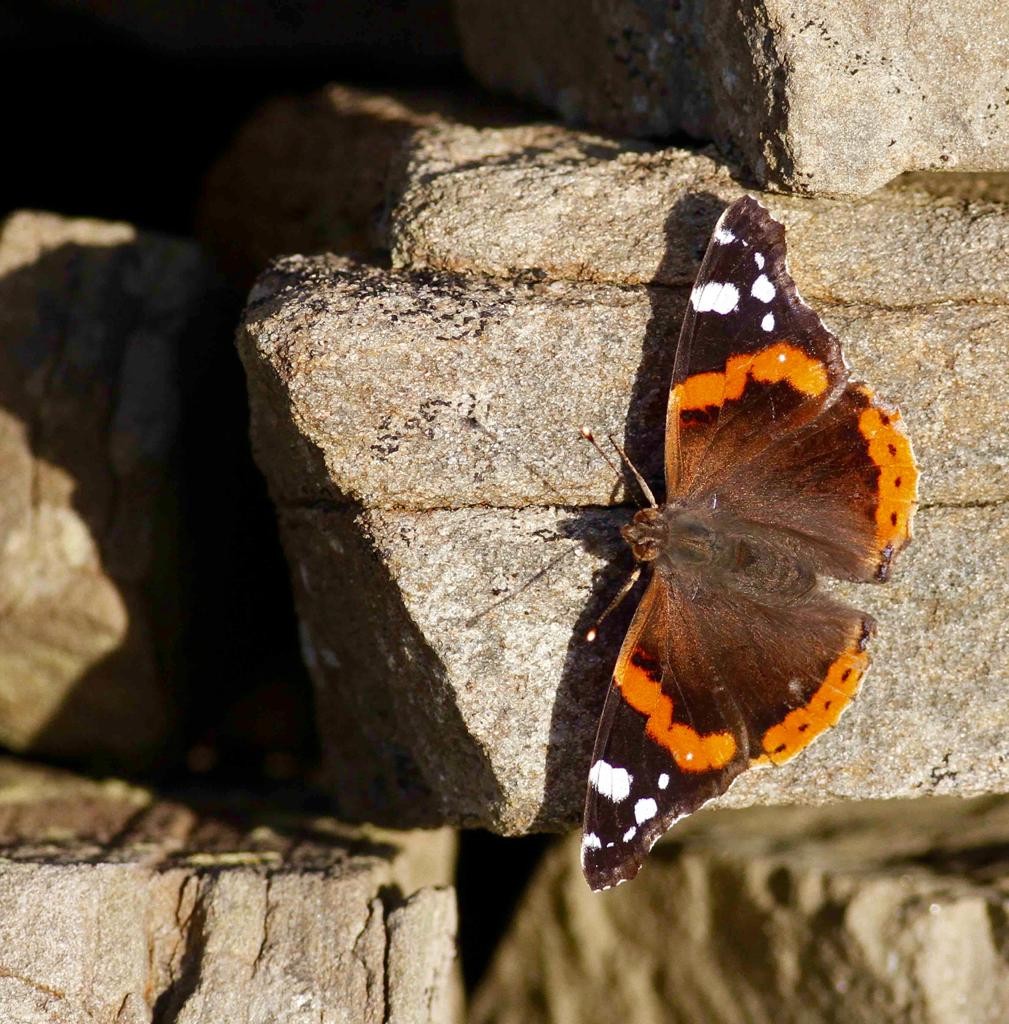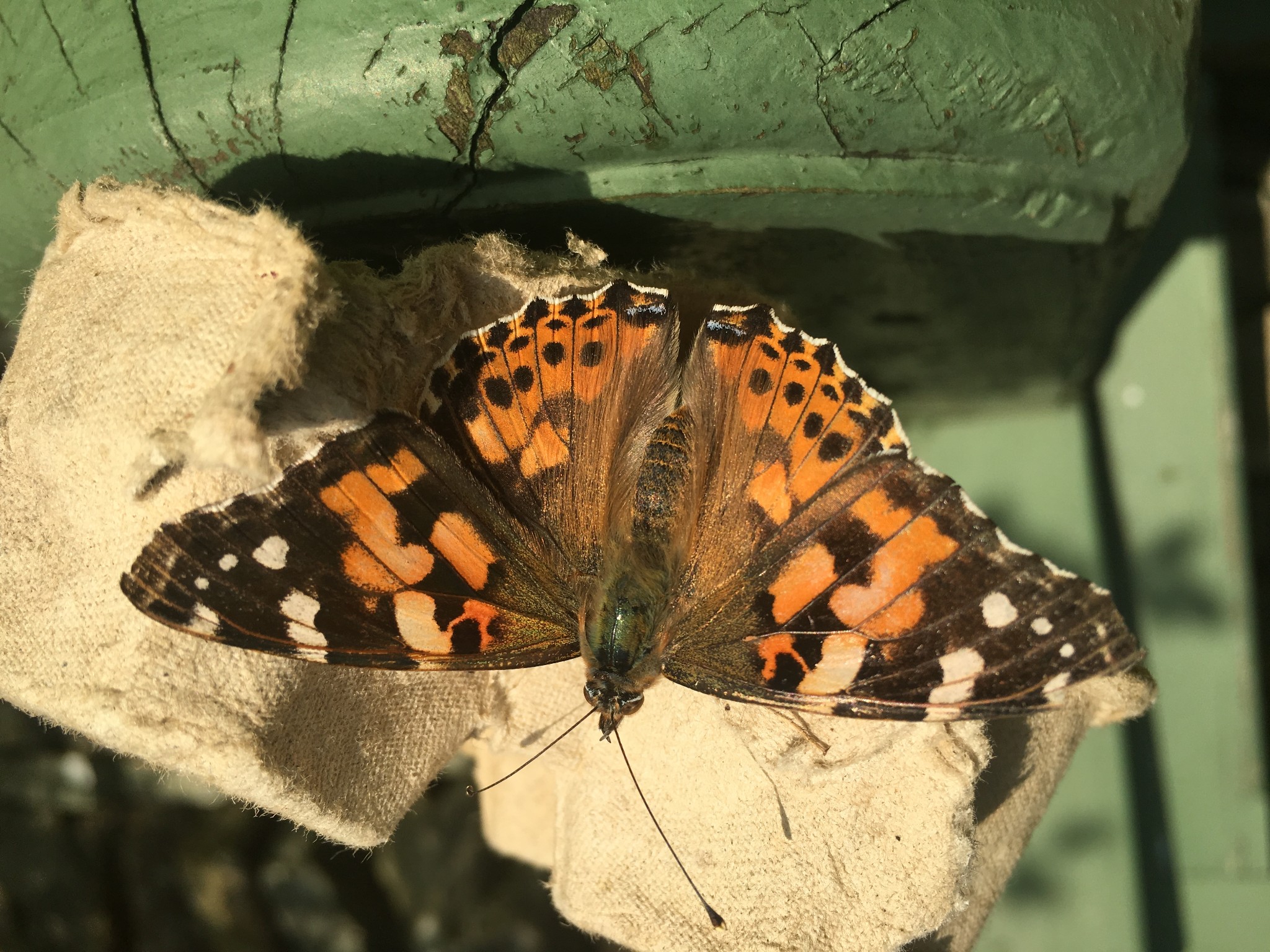What to look for this week - Beautiful Butterflies
Published: 09 June 2020
Here come the butterflies

There are only four butterfly species regularly recorded in the islands. Three of these are migrants – Red Admiral, Painted Lady (pictured here) and Small Tortoiseshell while the Large White is resident in the island – its caterpillars feed on brassicas which make it perhaps the UK’s least-loved butterfly; it too can arrive as a migrant in good years.

One butterfly that was once a rarity here but is now seen every summer and in increasing numbers, is the Peacock and it is tempting to think that this is a product of global warming. This butterfly with its dramatic ‘eyes’ on each wing is incredibly striking – these ‘eyes’ have evolved as a defence tactic. The butterfly sits with its wings closed when it is surprisingly well camouflaged but if it is surprised by a potential predator a quick flash of those ‘eyes’ causes enough of a shock to the predator to give the Peacock time to escape.
Insects are one of the groups that react quickest to global warming so we ought to keep our eye out for more potential additions to Shetland’s butterfly list. Both the Small White and Green-veined White breed in Orkney and may have occurred here naturally but a photograph would seal the deal and enable the observer to take their place in Shetland butterfly history! And perhaps a Comma might make it here – they have been moving north into Scotland at a rapid rate. If we are very fortunate then the Common Blue could recolonize Shetland – it survived here for a few years in the 1960s and 1970s but has since disappeared. Sometimes really spectacular butterflies find their way to Shetland – in the last couple of years Clouded Yellow, Camberwell Beauty and a Monarch all the way from the USA have been found in Shetland!
All records of butterflies would be welcome at the Shetland Biological Records Centre and we are happy to try and identify any photographs if that helps – send them to Paul.harvey@shetlandamenity.org A leaflet to help you identify butterflies can be found on the website
Find out more in our Butterflies leaflet.
Paul Harvey, Natural Heritage Officer, Shetland Amenity Trust - June 2020
We hope you have enjoyed this blog.  We rely on the generous support of our funders and supporters to continue our work on behalf of Shetland. Everything we do is about caring for Shetland's outstanding natural and cultural heritage on behalf of the community and for future generations. Donations are welcomed and are essential to our work.
We rely on the generous support of our funders and supporters to continue our work on behalf of Shetland. Everything we do is about caring for Shetland's outstanding natural and cultural heritage on behalf of the community and for future generations. Donations are welcomed and are essential to our work.

